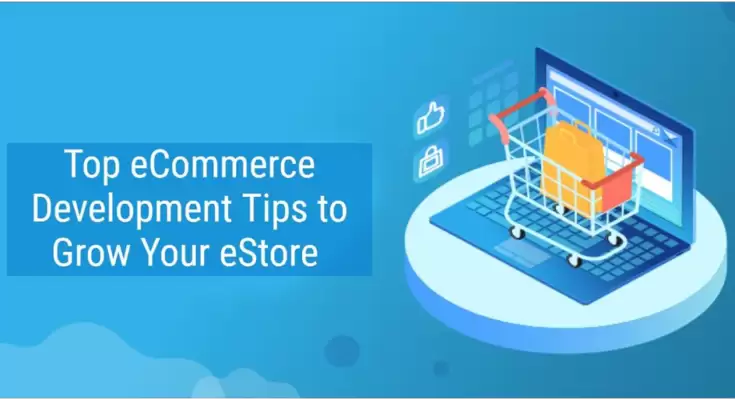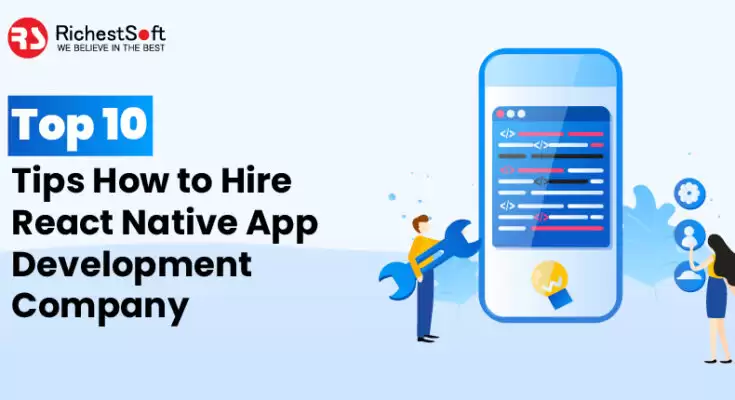Summary: The post introduces some expert ways to enhance an eCommerce site’s speed and performance. By implementing these tips in your site, you can certainly meet your KPIs and elevate sales figures along with constantly adding happy customers to your user base.
The write-up focuses on some critical elements which are often ignored by most online retailers and have a significant impact on a website’s speed and performance. Emphasizing customization, speed, and creativity, you can make the most out of your eCommerce website and build strong brand value
Sustaining a profitable online store in today’s fast-paced digital environment can be very dominating and challenging. It takes rigorous efforts to mark distinction among myriads. Plus, with so much innovation happening across the global eCommerce development landscape, keeping up can become a persistent issue for businesses.
So, if you wish to improve the outlook for your eStore, here are a few tips from retail experts that you can implement in your system during eCommerce development. These tips have been revealed by eCommerce industry experts and will help you gain desired agility in processes and elevate the performance of your site.
Speed-related Tips
The speed of a website keeps immense importance in deciding its success. Today’s fast-paced online shoppers hardly stick to slow-loading websites. Hence, the first thing you need to focus on is improving the loading speed of your eCommerce website.
1. Avoid excessive plugins & extensions
After a close technical assessment, one can find extensions that are not required, and shedding them away can help a store load faster. Also, before setting up a store, one should ensure that the store development process leaves out unnecessary extensions as they can slow down your website’s loading speed.
Moreover, too many extensions and plugins also lead to security vulnerabilities. However, there isn’t any specific number that you must consider, but still, for startups, it must never exceed 20 plugins. Set your priorities for desired eCommerce functionalities and make a list of plugins that can serve the purpose.
2. Effective cache management
If your store has a well-managed cache, you can increase your website speed to a significant level. There are various caching options to optimize your store performance. This improves your site’s data retrieval efficiency as it stores programs that can be easily executed quickly.
You can leverage servers along the delivery path to leverage specific content loads by allowing aggressive caching. With the help of reliable web development services, you can identify the best-suited caching mechanism to be implemented.
3. Switch to the latest version
Whatever web development platform you use (WordPress, Magento, or Shopify), switching to its latest version eliminates all possible incompatibility issues. Most e-retailers often avoid this critical aspect, which marks a great difference between a great eCommerce website and a poorly performing one.
Besides this, the enhancements in the latest versions also help your eCommerce site to steer clear of security loopholes, SEO issues, and web host suspension complexities. As a result, your site’s performance improves dramatically, offering a seamless user experience for customers. Read Also: Is Your eCommerce Site Offering the Right Digital Experience? Quick Insights (Source)
Tips to strategize your eCommerce store
The above-mentioned tips are related to elevating your eCommerce site’s speed. Let’s look at some other aspects that will help you create a better eCommerce strategy.
1. Provide an “Add to Cart” option through your store’s social media pages
Leveraging social media capabilities is a proven way to build strong brand value. Allow your Twitter followers and Facebook patrons to add items to their cart by simply replying “#Addtocart” with your store’s name to your product tweets and Facebook wall posts. This would enable the customer to save time looking for a product that had caught their attention. This feature would work by linking your customers’ accounts with their social networking accounts and proceeding with backend fulfillment.
2. Follow a minimal design and content-driven approach
Create crisp content explaining the product instead of marketing content and get the product images placed artistically alongside the content. One example you can follow is that of Net-a-porter’s website, which uses its original magazine styling for showcasing the products. A video gallery and offering how-to guides can be additional factors to allure visitors and buyers.
3. Have an enhanced focus on customer support
This is another often-ignored aspect of e-retailers. Offering good customer support is a proven way to get higher traffic for your site. People love websites that have live chat features to discuss products. When you pay heed to their comfort and preferences, word-of-mouth publicity will undoubtedly raise the credibility of your brand among myriads.
Make it a habit to respond to customers’ queries and concerns. This will leave positive reviews on your site, and slowly but certainly, you will start building trust among them and enhancing your user base with higher retention rates.
4. Include paid ads in your eCommerce marketing strategy
The use of Paid ads is an effective and proven marketing strategy to reach out to a wider audience and elevate sales figures. These ads help you to target audiences based on their demographics. Moreover, people often forget brands that reach out to them once a month; hence, scheduling a paid ad calendar helps you to stay ahead of the competition and grab maximum traffic for your eCommerce website.
It isn’t necessary that you always display your products only on paid campaigns. Instead, you can help people to know your business objective or workflow to develop good relations with them.
Back to you
The hypercompetitive eCommerce landscape demands massive budgets for marketing, competitive pricing, customization of products, and patience to test their winning strategy. But by implementing these critical tips in your eCommerce website, you can certainly assure better results and gear up your site for further expansion.
Author Bio:

Nathan Smith is an experienced web and app developer, currently working with TechnoScore- a leading eCommerce web design company in India. As a technology enthusiast, he is passionate about sharing his web and application development knowledge through his articles. Nathan keeps himself up-to-date with all the latest trends, innovations, and disruptions happening in and around the IT industry. He is also keen on sharing his ideas and understanding of the innovations in the IT domain with individuals and entrepreneurs interested in the trade.








